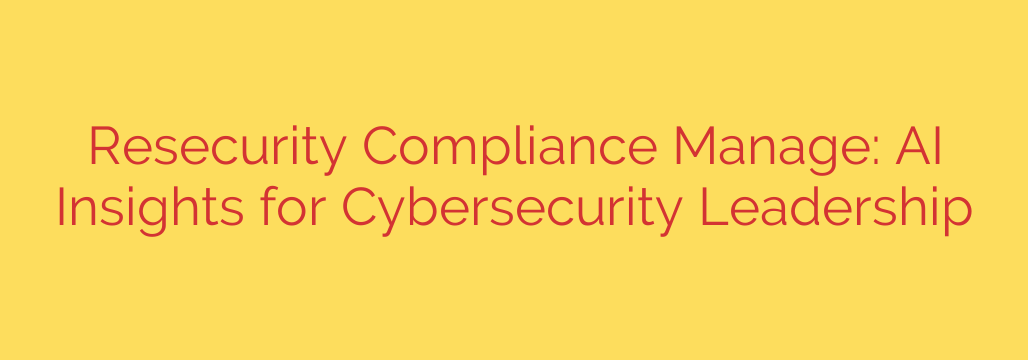
Navigating the complex landscape of cybersecurity compliance is a major challenge for organizations today. Regulations are constantly evolving, threats are becoming more sophisticated, and the sheer volume of data to manage is overwhelming. Traditional methods often involve manual processes, which are time-consuming, prone to error, and struggle to keep pace with the dynamic environment. This is where advanced technologies, particularly artificial intelligence (AI), are transforming how cybersecurity compliance is handled.
For cybersecurity leaders, gaining actionable insights is paramount. AI offers a powerful solution by automating tedious tasks and providing deep analytical capabilities that human analysts simply cannot match in scale or speed. An AI-driven approach allows organizations to move from a reactive stance to a proactive one, identifying potential compliance gaps and risks before they become critical issues.
One of the primary benefits of using AI in compliance management is enhanced efficiency. AI algorithms can process vast amounts of security logs, configuration data, and policy documents rapidly. They can automatically map these technical controls against regulatory requirements, such as GDPR, HIPAA, NIST, or ISO 27001. This automation significantly reduces the manual effort required for audits and compliance checks, freeing up valuable security personnel to focus on higher-level strategic tasks.
AI also excels at continuous monitoring. Instead of periodic compliance reviews, AI systems can constantly scan the network and systems for deviations from policy or potential vulnerabilities that could lead to non-compliance. When an anomaly or potential issue is detected, the AI can generate alerts and reports, providing real-time visibility into the organization’s compliance posture.
Furthermore, AI-powered tools can perform sophisticated risk assessments. By analyzing threat intelligence data alongside internal security information, AI can help prioritize risks based on their potential impact on compliance and overall security. This allows leaders to make more informed decisions about where to allocate resources and focus mitigation efforts. Identifying potential violations or misconfigurations early is crucial for preventing costly fines and reputational damage.
For leadership, the insights provided by AI are invaluable. AI platforms can generate customizable reports that highlight key compliance metrics, trends, and areas requiring attention. These reports are often presented in user-friendly dashboards, making it easier for executives and board members to understand the organization’s compliance status and the effectiveness of security controls. This clarity supports better governance and strategic planning.
Implementing an AI-powered compliance management system means adopting tools that can:
- Automate data collection and analysis from diverse security sources.
- Continuously map technical controls to regulatory requirements.
- Identify and prioritize compliance risks.
- Provide real-time monitoring and alerting.
- Generate insightful reports for various stakeholders.
Adopting AI in cybersecurity compliance is not just about meeting mandates; it’s about building a more resilient and secure organization. It empowers leaders with the data and insights needed to navigate the complex regulatory landscape effectively, manage risks proactively, and ensure sustained adherence to standards, ultimately protecting the organization’s assets and reputation. The future of compliance management is undoubtedly intertwined with the capabilities of artificial intelligence.
Source: https://www.helpnetsecurity.com/2025/05/29/resecurity-compliance-manager/








